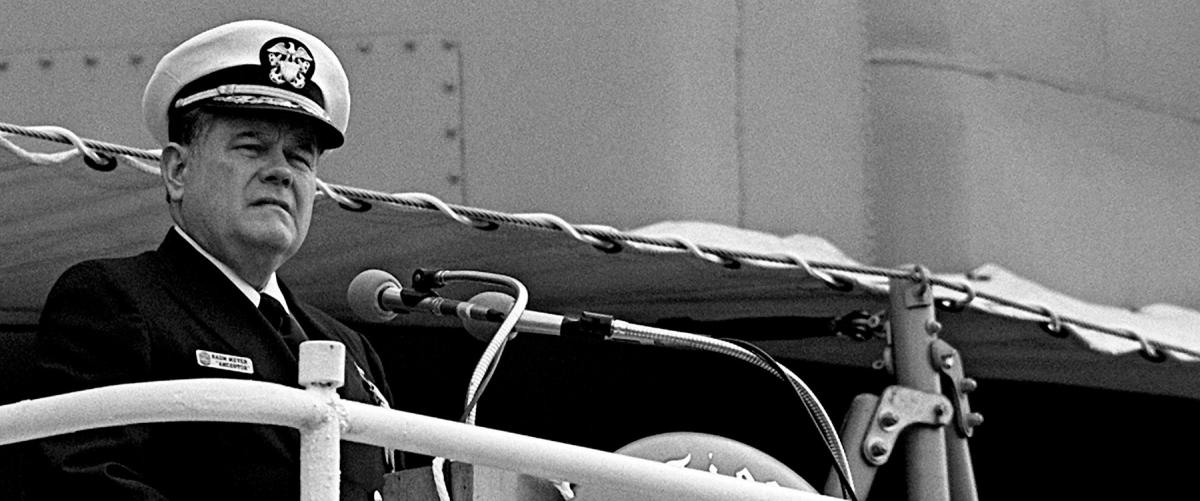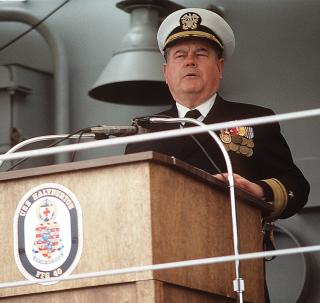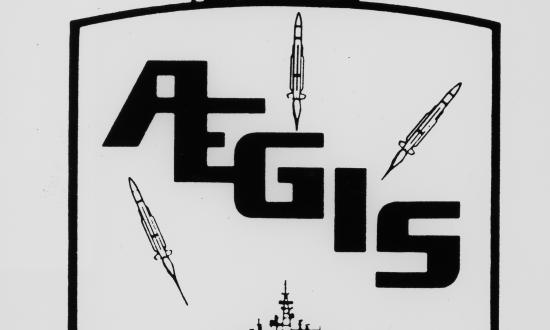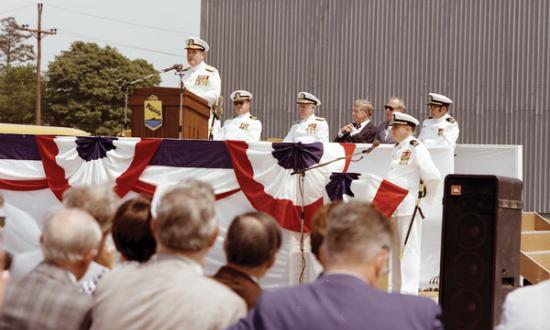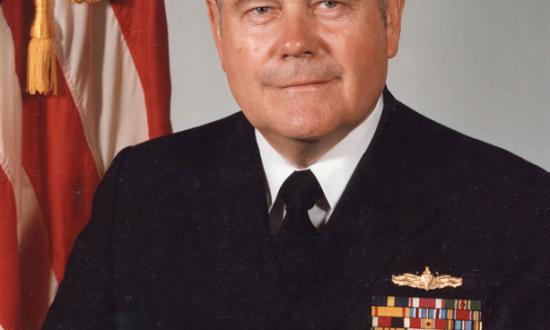This Aegis Fleet will go down as perhaps the greatest fleet in several centuries. . . . I am the designer. It is our fleet. Now did I do that? Of course not, but I led it. And you beg the question: Well, could anyone do it? I don’t know. I’ve had officers say to me, and particularly jealous admirals, “Well, if I’d been given as much money as you’ve been given, I’d have been good, too.” I finally got so my answer to them was, “Well, why didn’t you get the money? Because that’s how I got it. I went and got it.”
Future Navy Rear Admiral Wayne E. Meyer, a farmer’s son from rural Missouri, enlisted in 1943 at age 17. Graduating from the University of Kansas in 1946, he was commissioned an ensign in the Naval Reserve and went on to various tours in the surface Navy. After earning his master’s degree in aeronautics and astronautics from the Massachusetts Institute of Technology in 1961, he served as fire control officer on board the USS Galveston (CLG-3) during her conversion as the first cruiser with surface-to-air Talos missiles. He moved on to work on the Terrier missile in the Bureau of Naval Weapons, rising to director of engineering at the Naval Ship Missile Engineering Station, Port Hueneme, before his tour as weapons system manager, Advanced Surface Missile System (Aegis), Naval Ordnance System Command, from 1970 to 1974.
He recalls his experiences in the following edited excerpts from his Naval Institute oral history:
We had to raise unprecedented amounts of money, and fight off those who were saying, It’s going to take a long time; cut back the budgets and kind of dribble along. We coined the “Aegis to Sea” slogan and adopted lifeboat behavior: We’re all in this lifeboat, and we’ve got the option of trying to save ourselves or saying the hell with it. I refused to have anyone working with me who was not a volunteer.
We had two power tubes, and that was the introduction of the crossed-field amplifier, smaller than a kitchen table, actually 40 pounds, so that one man could handle it. Each array had 32 power tubes. Four arrays in a ship with 128 power tubes was how we massed that power.
We had a “trombone section” in the deckhouse; it would just blow your mind. This was the frequency of S-band, around 3,000 megacycles. The wave guideline for 3,000 megacycles in horizontal is about four inches wide, two inches vertical. We decided we could get by with half-height waveguide. It’s amazing what we have contributed to the field of engineering—ganging this power up and making it focus, come into phase, focus on a target 220 miles out, and get a detection. The Patriot program was alongside us, but they weren’t dealing in high power. AWACS was not dealing in high power or phased arrays.
The heart of the arrays was a ferrite phase shifter. Each radar in a cruiser has 16,000 of these in the radar and 2,000 more in the countermeasures piece, about six or seven inches long, taking the input signal and getting it in phase—they were pretty darned dainty. The materials in this shift came from a little outfit in the Catoctin Mountains, Maryland. We had them assembled at that place, hundreds of women doing it, called for a lot of dexterity and skill, 98 percent acceptance rate. I told these women it was because of them.
We sent the USS Norton Sound (AVM-1) down to Long Beach shipyard in 1973, put in this one array. She was operating the UYK-7 computers, then the UYK-43, which we also adopted into Aegis. We have those computers today, failure not an issue. Our opponents on the congressional floor said we had so many computer programs, the system could not be made to work. The Aegis system being down is very unusual indeed.



